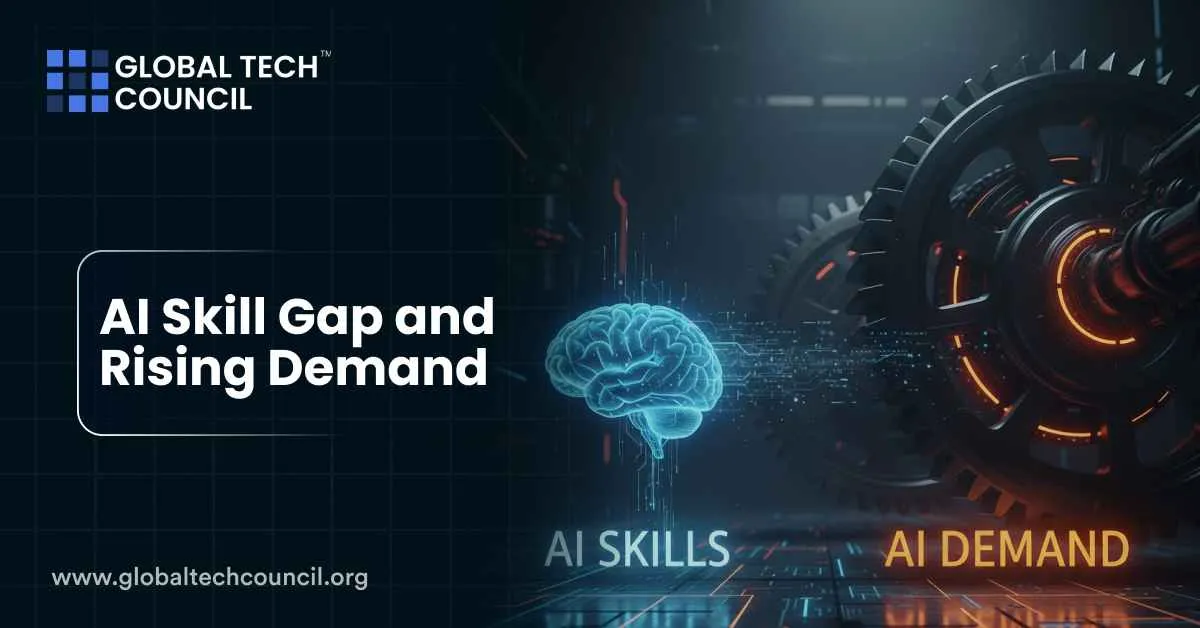
For professionals aiming to stand out, building expertise through programs like a data science certification is becoming increasingly important. Structured training ensures learners not only understand the tools but also know how to apply them responsibly in real-world scenarios. This makes them highly attractive to employers who face a shortage of AI talent.
The Reality of the AI Talent Shortage
Reports show that nearly seven out of ten organizations face moderate to severe shortages in AI expertise. Roles such as AI engineers, machine learning specialists, and AI ethics experts are in particularly high demand. Deloitte projects a shortfall of hundreds of thousands of AI professionals by 2027, and IBM has estimated a global talent gap of around 50 percent. At the same time, investment in AI continues to rise, with global spending expected to cross $550 billion.
Rising Demand Across Job Markets
Job postings reflect this demand clearly. Between 2010 and 2024, listings mentioning AI skills rose by more than 240 percent. Today, nearly 2 percent of all postings highlight AI knowledge as a requirement. What was once limited to tech companies has now spread across industries like healthcare, finance, marketing, and education. Employers see AI as a key driver of efficiency and innovation, which makes workers with these skills highly valuable.
Shift Toward Skill-Based Hiring
Another major trend is the move away from degree-based hiring toward skill-based hiring. Employers are placing more importance on demonstrated ability rather than formal credentials. Professionals with proven AI skills can command a wage premium of up to 23 percent compared to their peers. This opens the door for career switchers and self-learners who gain expertise through certifications or hands-on projects.
Comparison of AI Skill Gap Trends
| Trend | Insight | Why It Matters |
| Widening Gap | Millions of AI professionals needed by 2027 | Shortage slows adoption and innovation |
| Rising Demand | AI in 1.7% of postings, up 240% since 2010 | AI literacy is now mainstream |
| Skill-Based Hiring | Employers focus on ability over degrees | Creates opportunities for diverse learners |
| Wage Premium | AI-trained workers earn up to 23% more | Incentivizes upskilling and reskilling |
This table shows how shortages, rising demand, and hiring shifts are shaping the job market.
Non-Monetary Benefits of AI Roles
The advantages of AI roles are not limited to higher pay. Many positions that require AI skills also offer better benefits such as remote work options, flexible schedules, parental leave, and improved healthcare plans. Employers know how competitive the AI talent market is and use these perks to attract and retain skilled workers.
AI Skills That Complement Human Abilities
AI has also changed the type of human skills employers value. Technical AI knowledge needs to be balanced with abilities like problem-solving, teamwork, and resilience. Rather than replacing workers, AI shifts the focus toward roles where human creativity and judgment are still essential. This makes it important for employees to blend AI skills with complementary human strengths. Programs such as the Marketing and Business Certification emphasize this blend, preparing learners to lead with both technical understanding and strategic vision.
Training and Reskilling Workers
Companies are realizing that closing the AI skill gap requires training existing employees, not just hiring new ones. Many organizations are setting up internal training programs or partnering with educational institutions. Workers who invest in upskilling will be better positioned for promotions and leadership roles. For those who want to specialize, professional tracks like Deep tech certification visit the Blockchain Council provide in-depth knowledge that aligns with industry needs.
Practical Pathways to AI Careers
There are multiple ways to build AI skills. Traditional degree programs are still valuable, but certifications, bootcamps, and self-study are becoming more popular. Employers increasingly recognize these pathways as valid indicators of competence. This shift makes it possible for motivated learners to enter AI careers without following conventional routes.
Practical Overview of AI Workforce Opportunities
| Focus Area | Example Opportunities | Career Advantage |
| Technical Roles | AI engineers, data scientists, ML specialists | High demand and salary premiums |
| Ethics & Governance | AI ethicists, compliance officers | Ensures responsible and fair AI adoption |
| Cross-Industry Demand | Marketing, healthcare, finance, education | Expands career options beyond tech |
| Reskilling Programs | Corporate training and certifications | Helps workers transition into AI roles |
| Complementary Skills | Leadership, creativity, collaboration | Builds long-term career resilience |
This table illustrates how diverse opportunities exist within the AI workforce, from technical jobs to ethical and leadership roles.
Why This Matters
The widening AI skill gap is not only a challenge for businesses but also an opportunity for workers. Those who build skills today will be rewarded with higher pay, better benefits, and career advancement. At the same time, industries need ethical and well-trained professionals who can ensure AI is used responsibly.
Conclusion
The AI skill gap and rising demand highlight a turning point in the global workforce. Organizations face urgent needs for talent, while individuals have unprecedented opportunities to reshape their careers. Success will depend on continuous learning, a balance of technical and human skills, and a commitment to using AI responsibly. For professionals ready to invest in their growth, the demand has never been higher, and the rewards have never been greater.
Leave a Reply